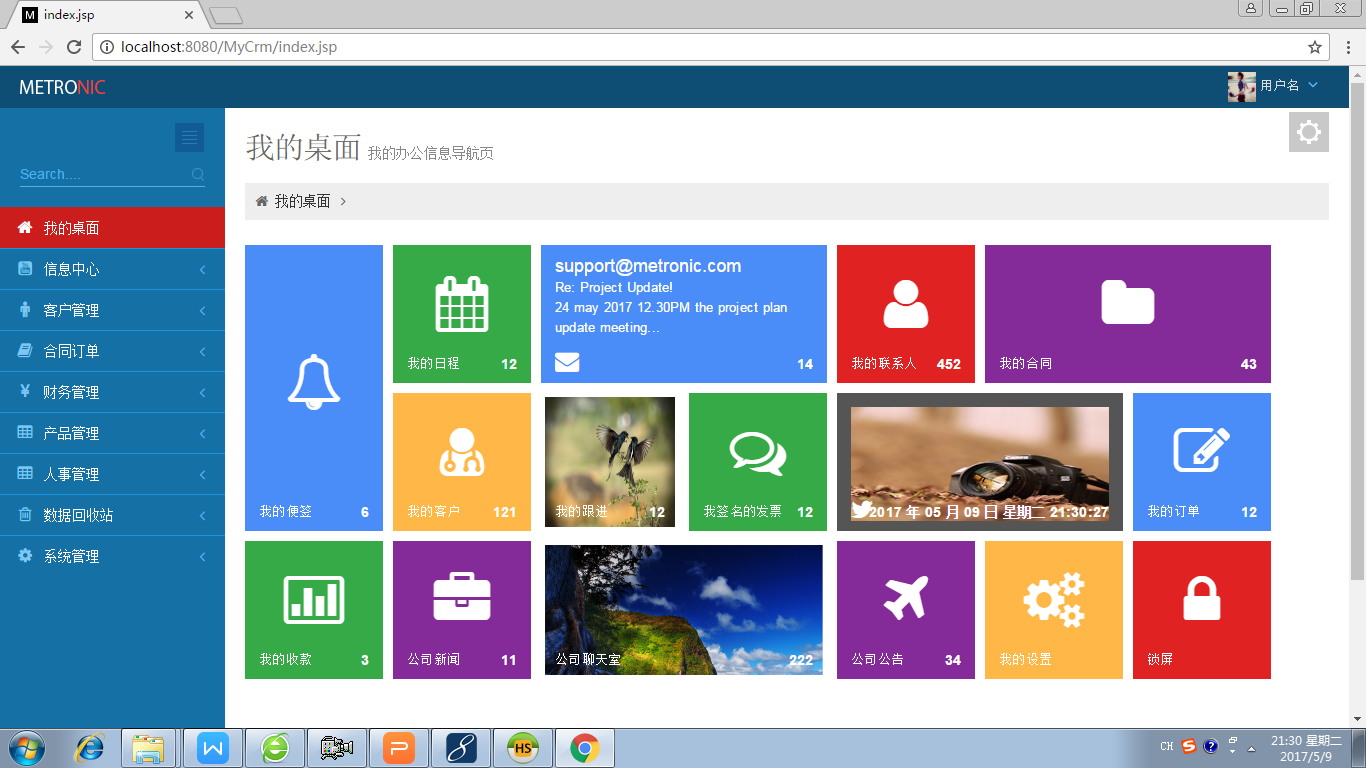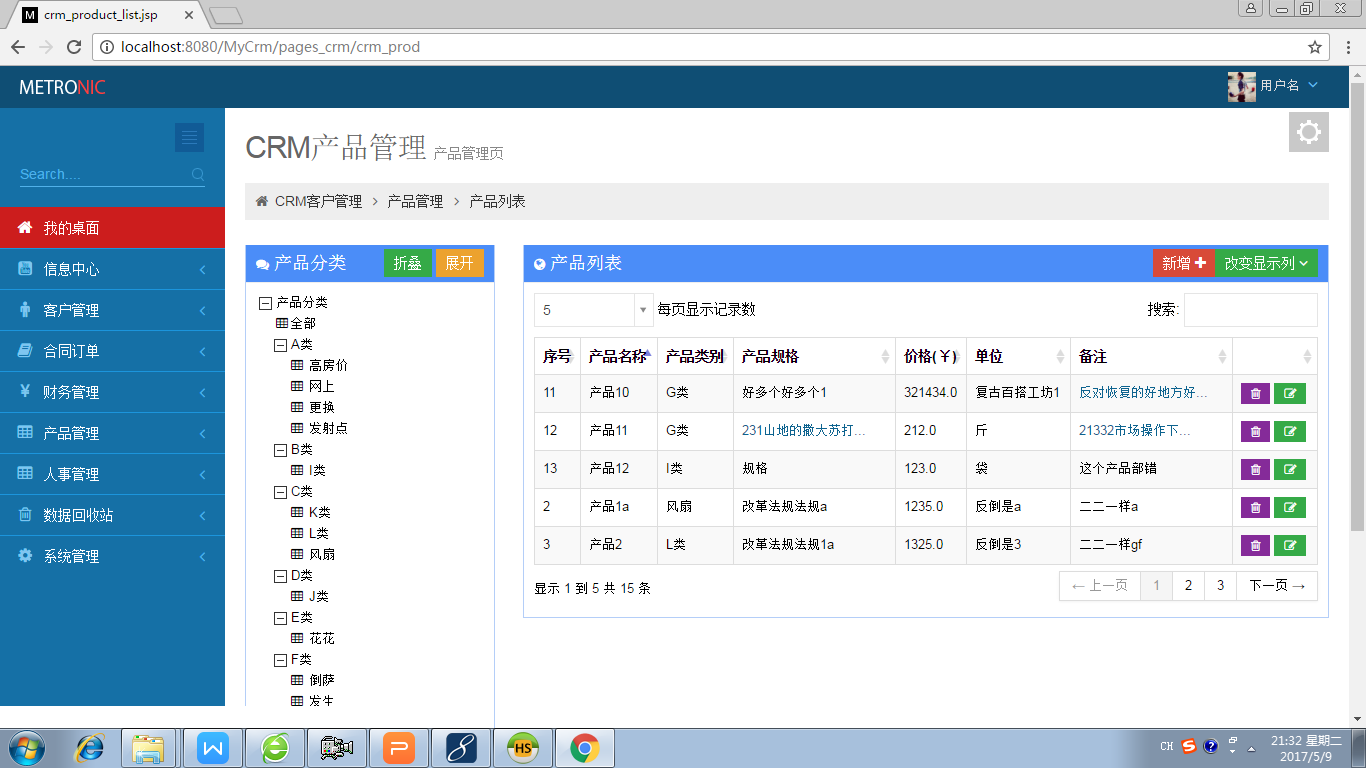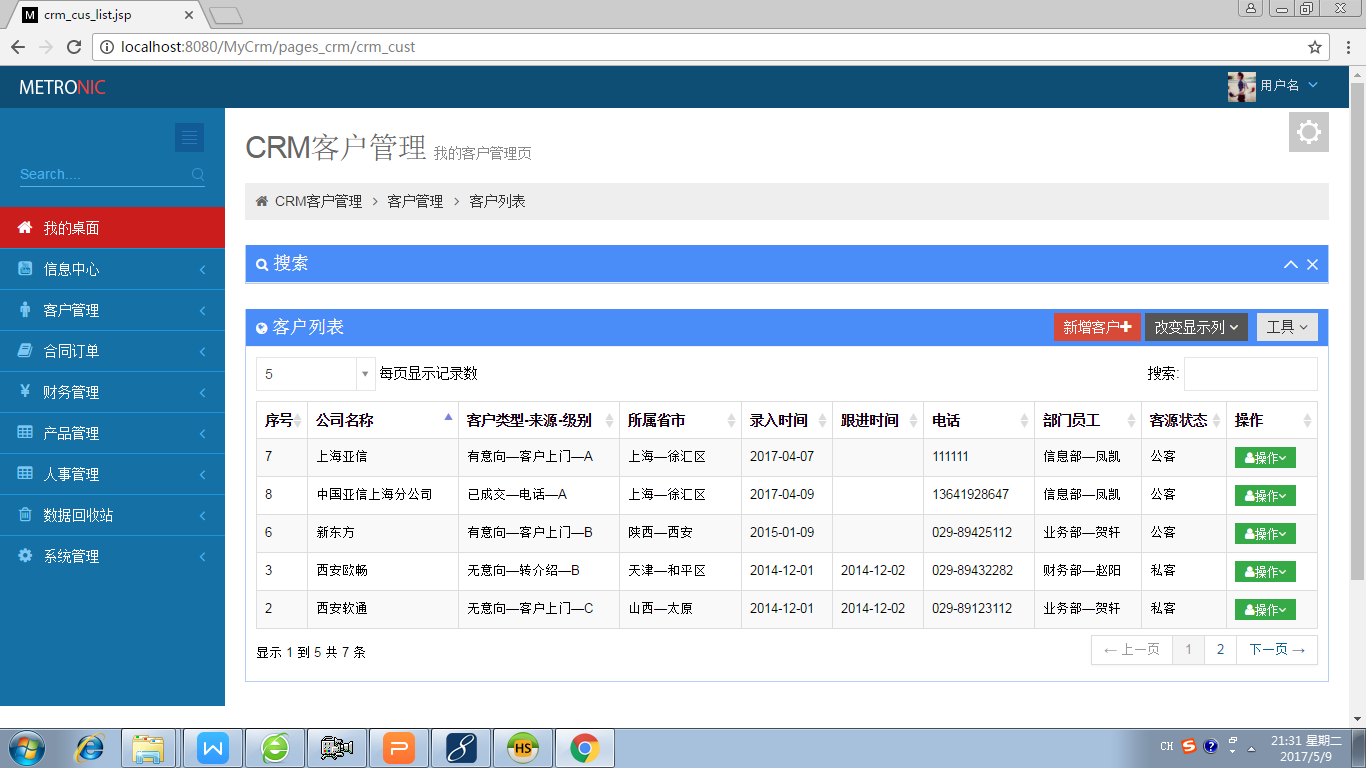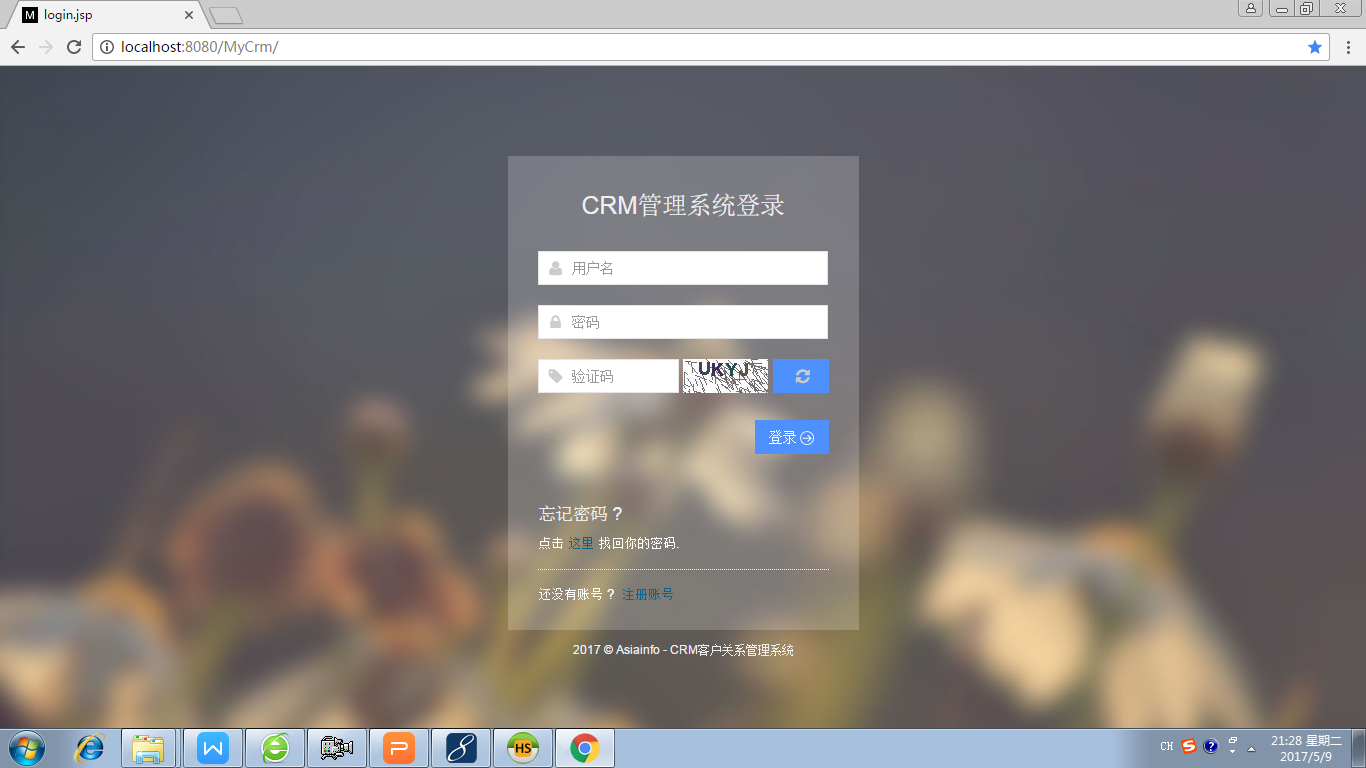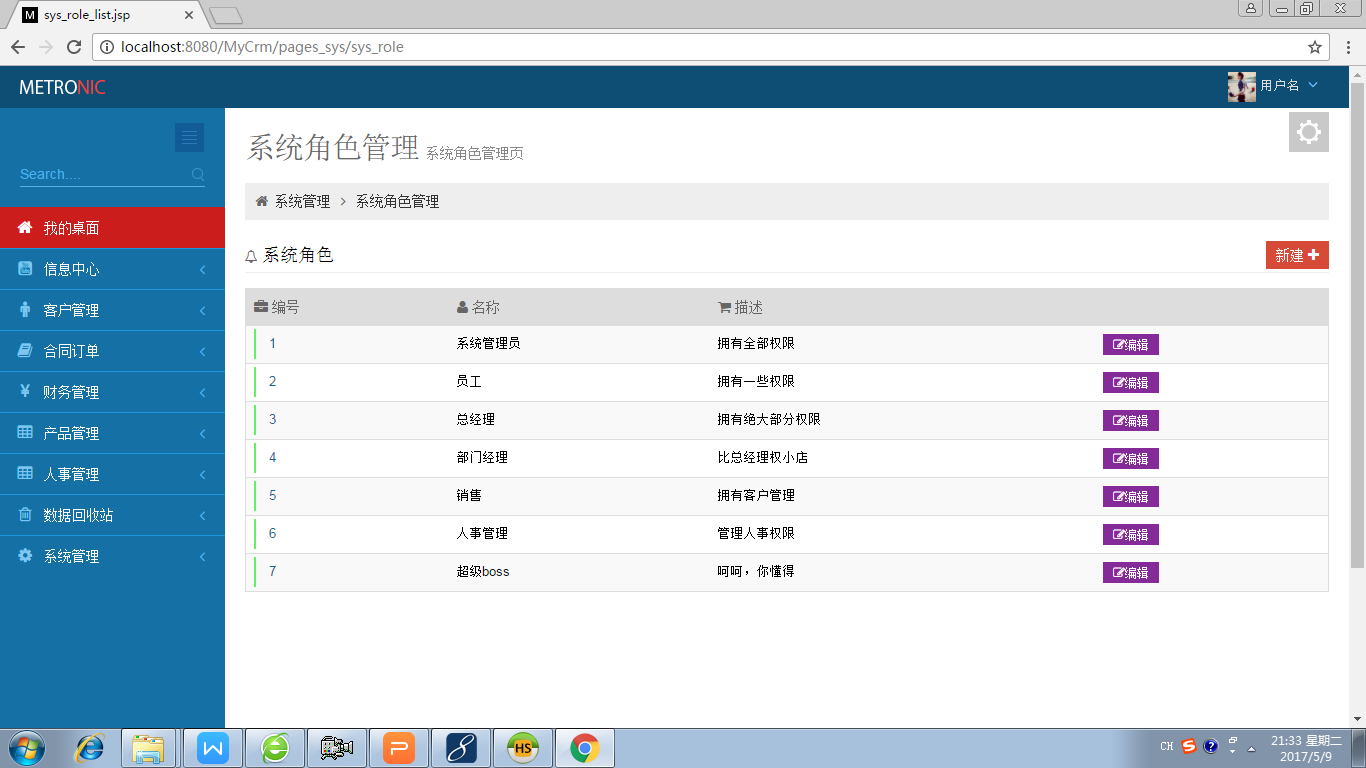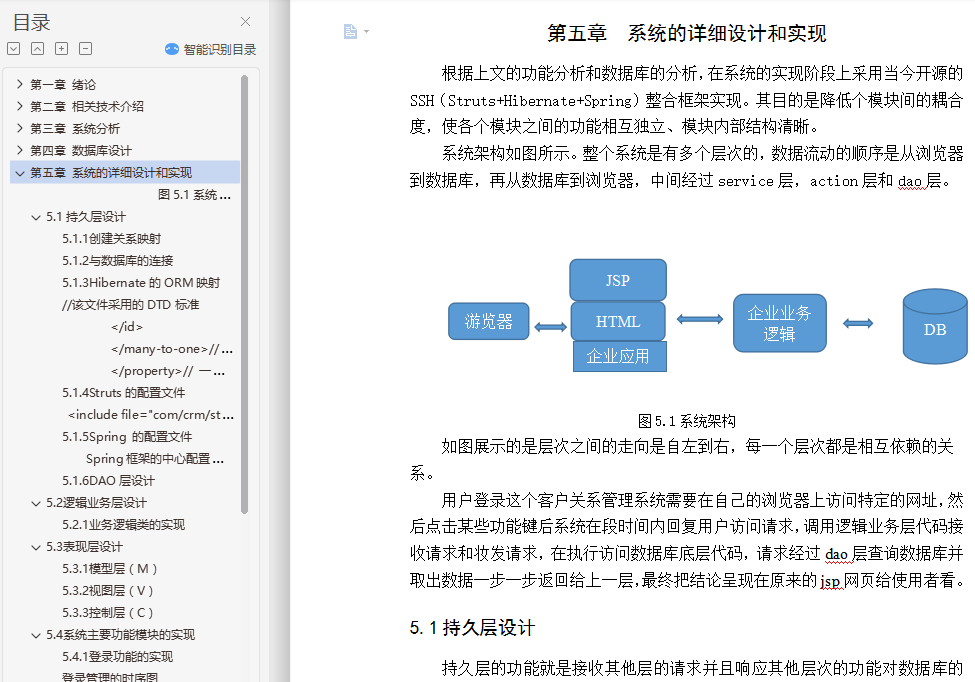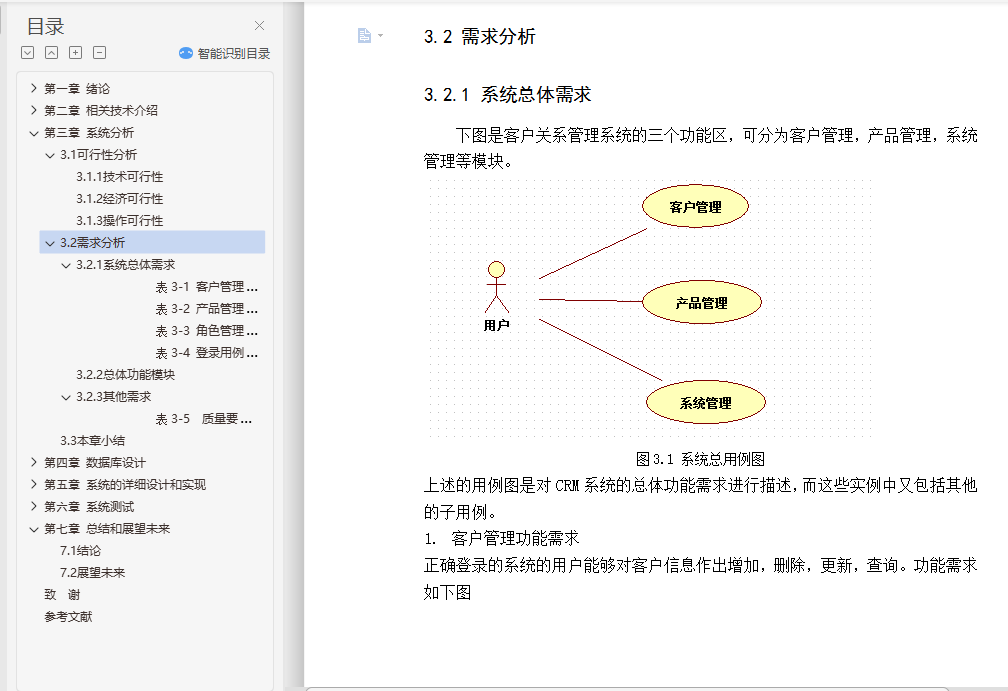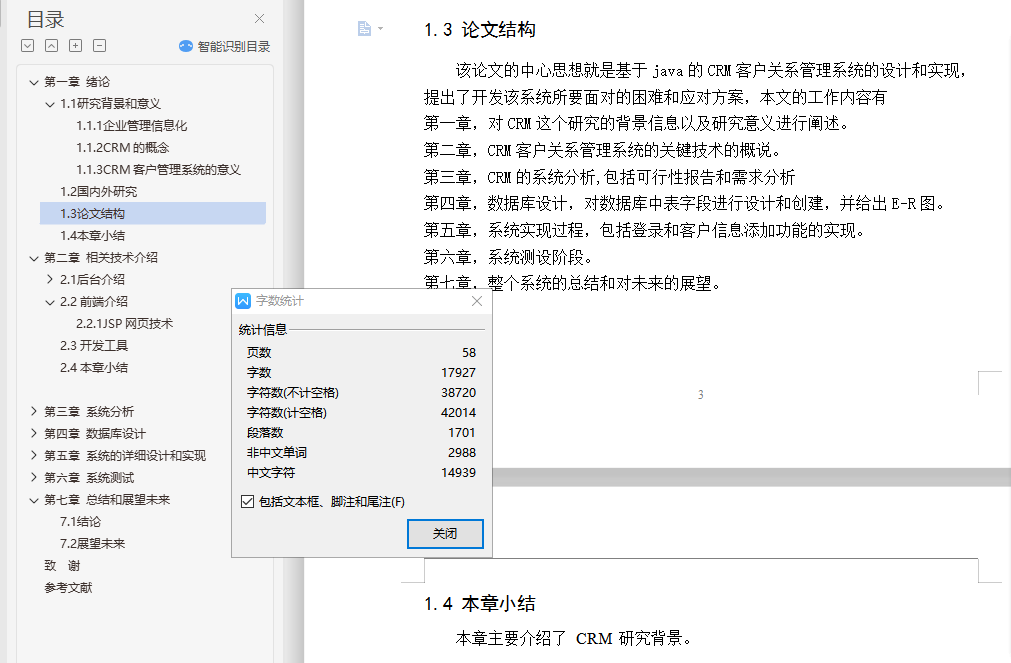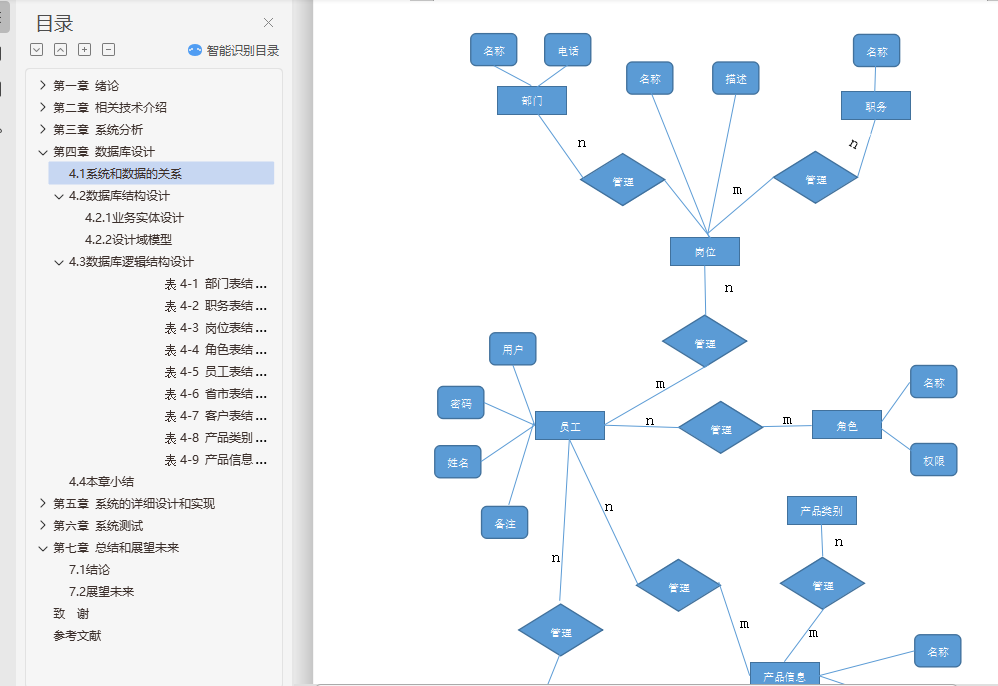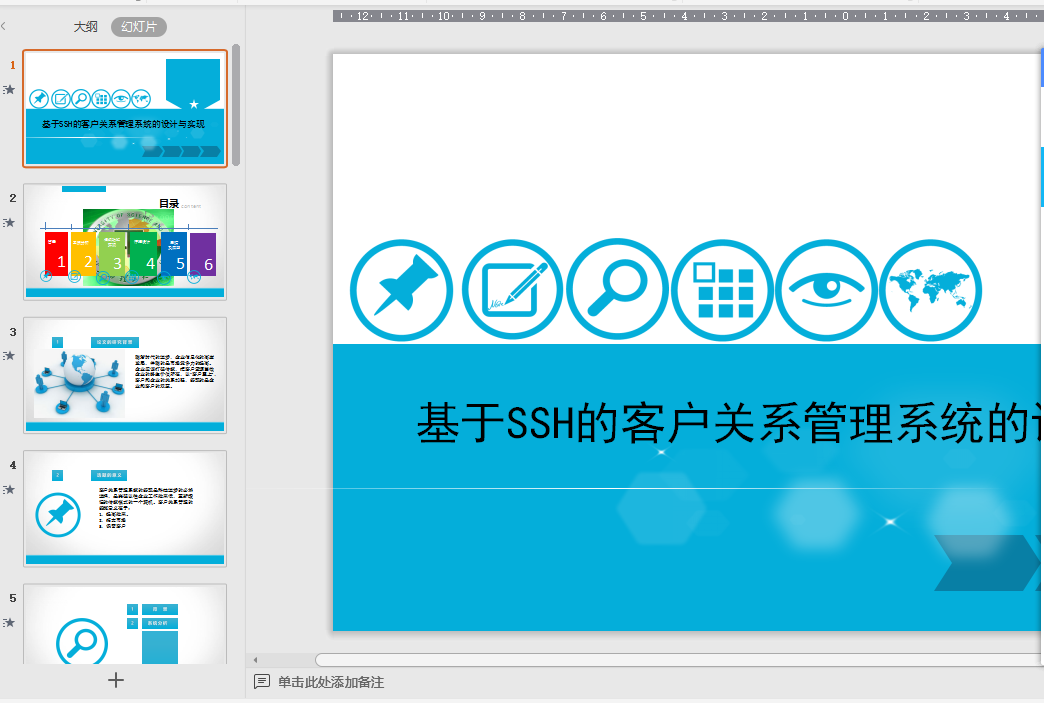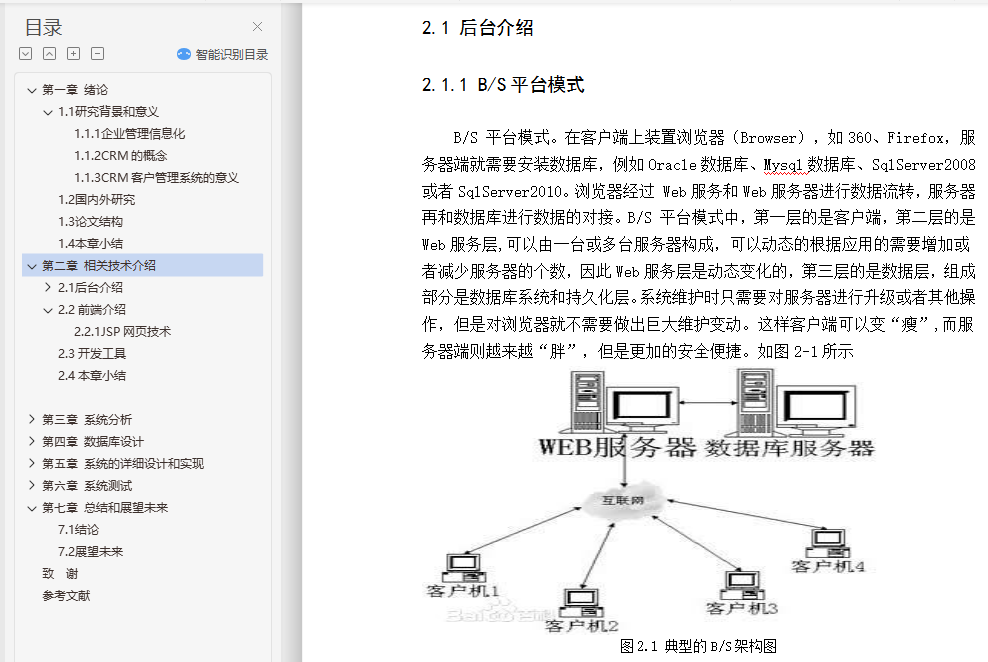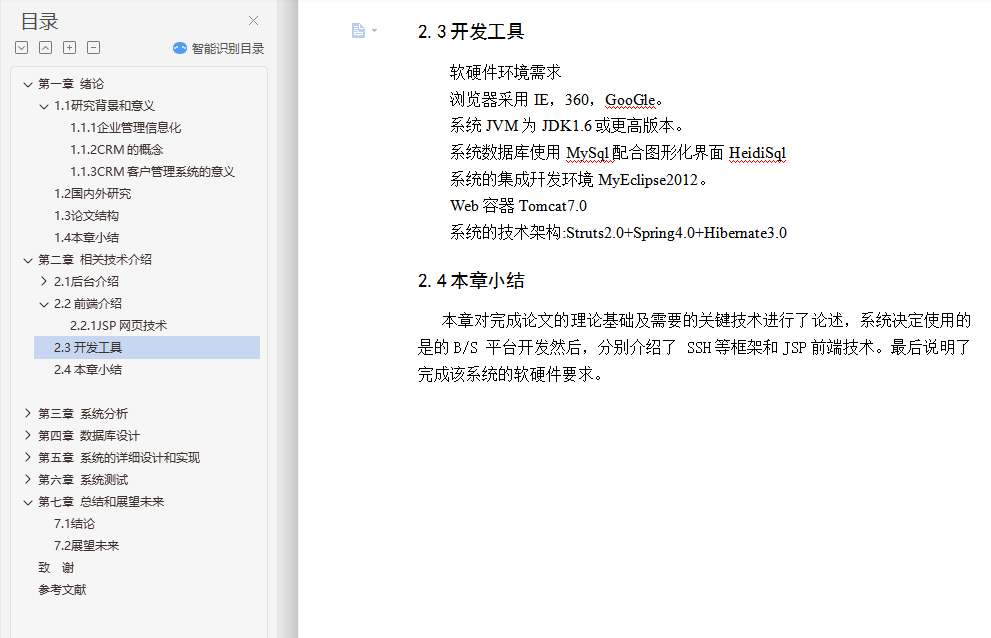摘 要
随着互联网的高速发展,市场经济的信息化,让企业之间的竞争变得,为解决快速把握客户的需求变化,增加客户和企业的互动,降低企业的服务成本,把信息的分析和加工成为企业脱颖而出的创新点等问题。那么客户关系管理孕育而生。客户关系管理系统的目的就是通过全新的管理理念整合客户信息资源,了解和满足客户的动态需求,从而提高企业效益。
论文的主要工作有:首先简单介绍研究CRM客户关系管理系统的背景。其次,简单介绍下该系统需要用的技术和框架--SSH和JSP。然后由需求分析决定的系统设计方案,再到系统详细设计,从系统的构架,功能模块,关键的技术点进行对CRM的开发。在采用Myesclipe作为开发工具,MySql作为数据库支持,结合SSH框架实现。
最后:完成测试阶段。
关键词:客户关系管理、SSH、MySql、B\S、JSP
ABSTRACT
With the rapid development of Internet, the information of market economy, make the competition between enterprises becomes, in order to solve quickly grasp the changing needs of customers, increase customer and enterprise interaction, reduce the service cost of enterprises, the analysis and processing of information has become the enterprise talent shows itself innovation and other issues. So customer relationship management is born. Customers the relationship between management system is designed by a new management concept to integrate customer information resources to understand and meet the dynamic needs of customers, so as to improve the efficiency of enterprises.
The main work of this paper is:First, a brief introduction of the background of the CRM customer relationship management system。Secondly a brief introduction of the system requires the use of technology and framework --SSH and JSP.Then, analysis of system design scheme is decided by the demand to the detailed design of the system, from the system architecture, function modules, key technical points for the development of CRM. In the use of Myesclipe as a development tool, MySql as database support, combined with the SSH framework.Finally complete the test phase.
Key words: customer relationship management, SSH, MySql, BS, JSP
目 录
第一章 绪论 1
1.1 研究背景和意义 1
1.2 国内外研究 3
1.3 论文结构 3
1.4 本章小结 4
第二章 相关技术介绍 5
2.1后台介绍 5
2.2前端介绍 10
2.3开发工具 11
2.4本章小结 11
第三章 系统分析 12
3.1 可行性分析 12
3.2 需求分析 13
3.3 本章小结 18
第四章 数据库设计 19
4.1 系统和数据的关系 19
4.2 数据库结构设计 19
4.3 数据库逻辑结构设计 22
4.4 本章小结 28
第五章 系统的详细设计和实现 29
5.1 持久层设计 29
5.2 逻辑业务层设计 39
5.3 表现层设计 40
5.4 系统主要功能模块的实现 41
5.5 本章小结 48
第六章 系统测试 49
6.1 系统测试综述 49
6.2 测试用例 49
6.3 本章小结 51
第七章 总结和展望未来 52
7.1 结论 52
7.2 展望未来 52
